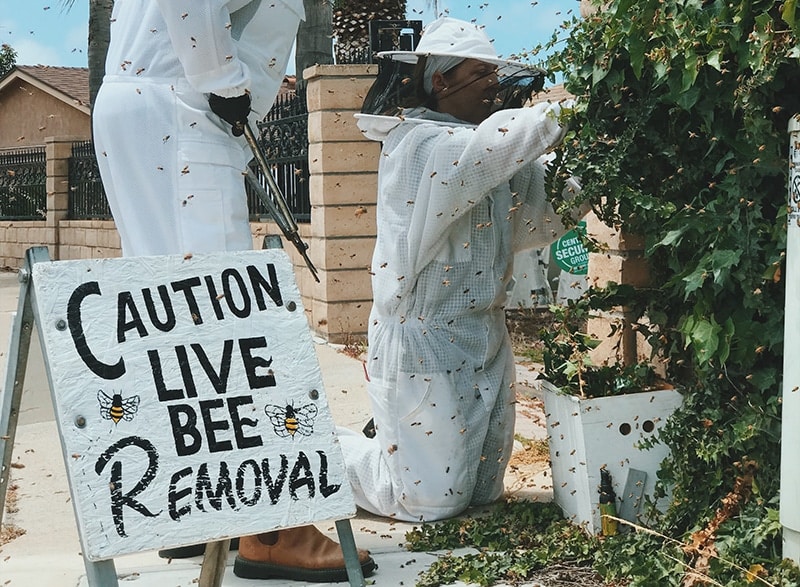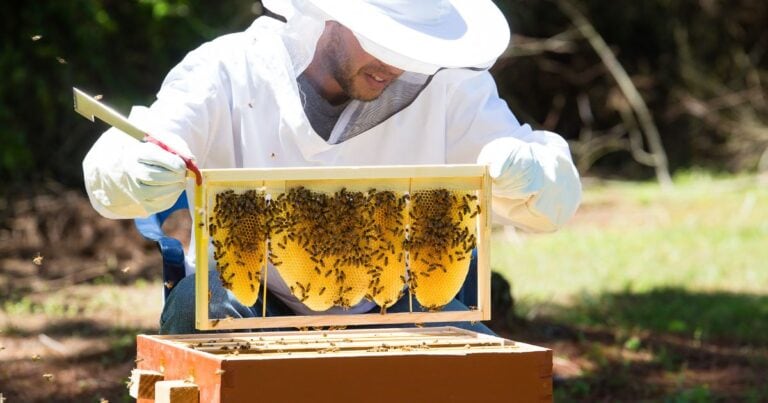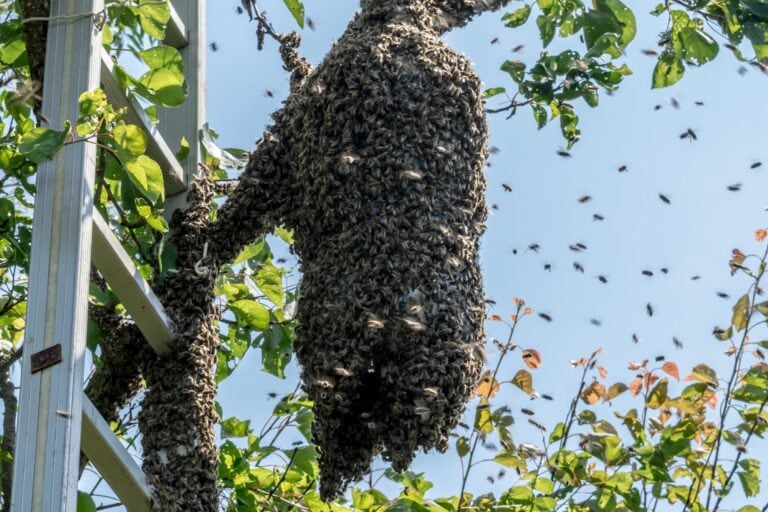Why Do Beekeepers Charge For Bee Removal?
Those wanting free bee removals often assume things about the beekeeper, including they’ll profit from the removal. Here’s why beekeepers charge for bee removals.

While it’s true that some hobbyist beekeepers will gleefully remove a colony of bees for free, many beekeepers charge for live bee removal.
This inconsistency among beekeepers can create some confusing expectations for homeowners.
Unfortunately, it may also result in some unpleasant interactions between the beekeeper and members of the public.
So, why do some beekeepers charge while others do not? What should you expect from your local community of beekeepers?
Let’s look at some of the misconceptions and unseen costs of rescuing bees.
Misconceptions
People who expect free live bee removal often assume the beekeeper wants the bees, the task is easy and the bees will make the beekeepers some honey.
Some believe their bees have a value that outweighs the value of the beekeeper’s time and efforts.
The truth is, wild bees may have some value, but it’s difficult to judge right away.
Some bee removals are simple, while others can take hours. Some removals will result in a honey harvest, but many will not.
A beekeeper who rescues a colony of bees for free is therefore taking a gamble.
Honey
Just because you have a colony of bees, does not mean you have honey.
Bee colonies typically need to mature for a full year before honey can be harvested.
Even if the colony you want to have removed is mature, the amount of honey they have stored depends on the time of year and their health.
Difficulty Level
Bee removals can be divided into two categories:
- swarm removal
- established colony removal.
If the group of bees has just arrived, they are most likely a swarm.
A swarm is only a ball of bees with no comb. If the swarm is easy to get to, then it should be a simple and quick removal. Most beekeepers are capable of swarm removal and many even enjoy the process. It’s fairly common for beekeepers to remove swarms for free.
If the bees have been in the same place for more than a week, you can assume they are established. The longer the bees have been there, the more comb they will have built and the bigger the colony will be.
These kinds of removals require extra skill and knowledge. Especially if the bees have ensconced themselves inside a structure. The process can be messy, exhausting and time-consuming with a greater risk of stings.
Most beekeepers are not willing to do these types of removal for free.

The Value of the Bees
Judging the value of a wild colony isn’t as straightforward as you would think. Some try to base the value on the going rate of new colonies.
Beekeepers typically pay $125-250 [note: the author is in the US] for a new colony of bees – and that’s just the bees, not the equipment.
Yet, these bees have been bred to have desirable traits like docility, disease resistance and honey production. They should also be guaranteed to be in good health and have a queen.
Wild rescue colonies make no such promises.
They may be ill-tempered (a trait that will not reveal itself until the colony is established), unhealthy and/or queenless. Resolving these problems often costs the beekeeper money and time.
Additionally, if the colony is in poor health, they put the beekeeper’s apiary at risk. The rescued colony could easily spread disease to the beekeeper’s other hives.
On the other hand, a healthy wild colony may have rare genetic traits perfected by nature that are essentially priceless to the beekeeper. The problem is, that only time will tell the difference.
A good analogy for wild rescue bees is that they are like cultivating a fruit tree from a wild seed. The grower must invest time and money into caring for this tree while it reaches maturity without any assurance that it will pay off. The tree may produce only small, flavorless fruit or none at all. On the other hand, it could yield a unique variety of fruit not available in stores.
The Unseen Costs of Bee Removal
Equipment
One of the most concrete expenses in live bee removal is the equipment required to house the bees. A basic setup will cost the beekeeper at least $150 for every new colony and oftentimes more.
Time & Gas
When a beekeeper comes to your home to remove bees, they are at the very least, spending their time and gas to get there. The more complex the bee removal, the more time it requires. Large, sticky removals often result in the additional time and expense of clean up.

Skill
Beekeeping is a skill that takes years to learn. Depending on how much time they have to devote to it, most beekeepers take about 2 years to really understand the craft. Bee removal is a separate skill set that can also take years to perfect, although most beekeepers are capable of simple swarm removals.
Space
Every new colony takes up space in the apiary. Some beekeepers have limited space and can only house so many bees. They may even be paying rent or honey for access to the land.
Ongoing Care
Once a beekeeper has acquired a new colony, they must care for it for the rest of its lifespan. That might be years. Not only is this time and effort but there will be ongoing expenses. The bees need a new queen, feed and/or medicine.
Insurance & Business Expenses
If the beekeeper is running a business, they will have additional expenses associated with bee removal work. They are likely paying for liability insurance, workman’s comp, employees, a website, advertising etc.
Resetting Expectations
Every location is different with its own unique mix of beekeepers. When seeking out live bee removal, be conscious of whether you are contacting a business or a hobbyist.
If the beekeeper has a website or business name, they probably charge for bee removal. That said, they are also more likely to be reputable, reliable, experienced and insured.
Many hobbyists (experienced and not) are willing to do simple bee removals at no charge, but regardless of who you contact, please be respectful of that person’s time and skill.
Don’t assume that they will work for free. Even if a beekeeper has agreed to remove your bees for free, it’s a nice gesture to offer them a few dollars for gas, produce from your garden or some other show of appreciation.
—
This post was written by Hilary Kearney from Girl Next Door Honey.




